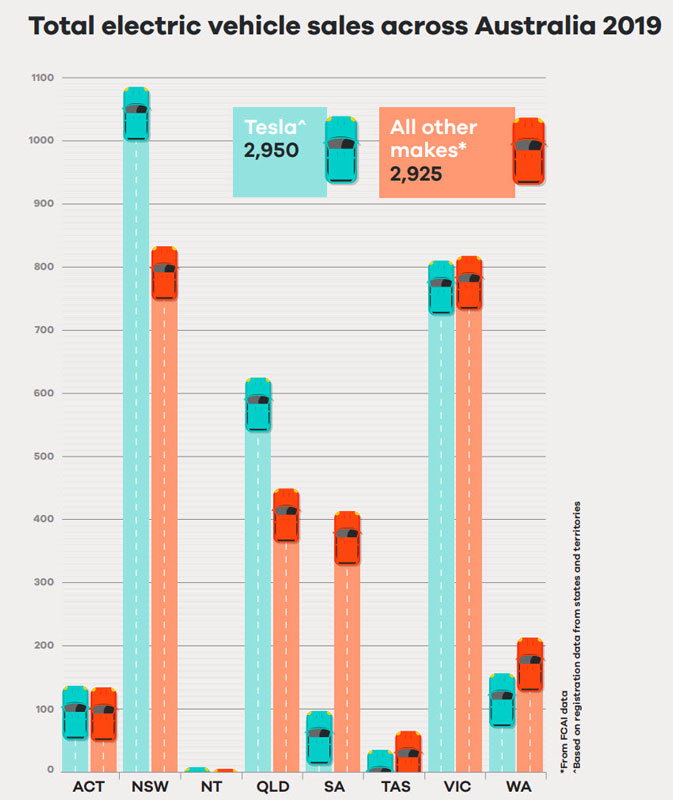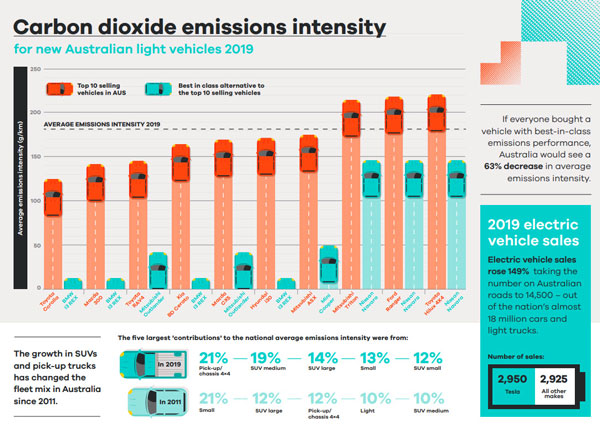Electric vehicles are becoming more popular in Australia albeit off a low base with a 149 per cent increase in new car sales in 2019 compared with 2018, the National Transport Commission’s Carbon Dioxide Emissions intensity for New Australian Light Vehicles 2019 report released this week shows.

Electric vehicle sales have increased from 2,357 in 2018 to 5,875 in 2019. However, the total number of electric vehicles on Australian roads at 14,500 makes up a very small proportion of the nation’s almost 18 million cars and light trucks.
Executive Leader Sustainability for the National Transport Commission, Sandra McKay, said that the report helps inform governments, fleet managers and consumers about Australia’s purchasing trends and the collective impacts of our buying choices.
‘One of the key findings in the report is that if we choose new vehicles based on emissions performance, we can have a significant impact.
‘If everyone who purchased one of Australia’s top 10 selling cars or utes last year had chosen the best-in-class vehicle for emissions, Australia would have recorded a 63 per cent reduction in emissions intensity from the cars sold. Instead, Australia recorded a 0.2 per cent drop in emissions intensity.’
Australians’ consumer preferences over the last decade have shifted towards heavier vehicles with larger and more powerful engines, the analysis has found.
European and Asian markets are trending towards smaller vehicles with lower emissions.
‘With consumers becoming more aware of their carbon footprint and with the slow but increasing popularity of electric vehicles we hope that our report will help anyone looking to purchase a new vehicle see how easily they can make a real difference,’ Ms McKay said.
The NTC’s report uses data from the Federal Chamber of Automotive Industries (FCAI) to report on the national average carbon emissions intensity from passenger and light commercial vehicles sold in Australia. The NTC thanks the FCAI for the data used in the report.

Other key findings in the report include:
- The average emissions intensity from government car fleets decreased by two percent in 2019.
- The emissions intensity for private buyers also decreased.
- The average emissions intensity for business buyers increased.
- The average emissions intensity for new passenger vehicles in European countries was 120.4 g/km in 2018 (using provisional European data).
- The corresponding figures in Japan and the United States were 114.6 g/km and 145.8 g/ km, respectively, in 2017 (the latest available year).
- Australia’s average emissions intensity for passenger vehicles in 2018 was 169.8 g/km, 41 per cent higher than for Europe.
- In 2011, pick-up trucks were responsible for 12 per cent of emissions, and now 21 per cent in 2019.
- In 2011, small cars and small SUVs were 31 per cent of the mix, and now they are 25 per cent.
To read the full report visit the NTC website: www.ntc.gov.au/transport-reform/light-vehicle-emissions